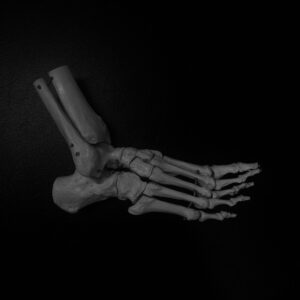Lateral ankle sprains are very common injuries that can happen to anyone, whether you are an athlete or simply going about your day-to-day tasks. Lateral ankle injuries are the most common form of ankle sprain. This is where your foot rolls inwards and you stretch the outer side of your ankle. This movement is called inversion. Often people will refer to this as “rolling my ankle”.
Lateral ankle sprains often happen during activities that involve sudden change in direction, pivoting, jumping, landing, or uneven surfaces. Sports such as netball, soccer or simply running or walking on an uneven curb are common culprits for lateral ankle sprains.
So what have I injured?
Lateral ankle sprains occur when the ligaments on the outside of the ankle stretch or tear due to excessive force or twisting the foot. This complex is made up of three main ligaments: the anterior talofibular ligament (ATFL), the calcaneofibular ligament (CFL) and the posterior talofibular ligament (PTFL).
These injuries are graded from I to III. Grade I injuries mean the ligament has been stretched and perhaps one or two fibres have been torn. Grade II injuries indicate that a significant portion of the fibres of the ligament have been torn. A Grade III injury means that the ligament has been ruptured.
Acute management for a lateral ankle sprain typically will involve a period of rest, ice, compression and elevation (RICE). Sometimes using crutches, wearing a brace or moonboot may be required but consult your physiotherapist or GP first as every injury is different.
Once your ankle is feeling less acute, Physio guided strengthening can commence. Improving strength, proprioception and balance around the ankle joint is imperative to reduce the risk of reinjury to your ankle. Simple exercises such as single leg balance, calf raises then progressing into more dynamic movements such as jumping, hopping and landing will get you back to the activities that are meaningful to you with confidence and ease.
If you would like your ankle assessed following an injury our sports Physios here at Bend + Mend in Sydney’s CBD would love to help.






